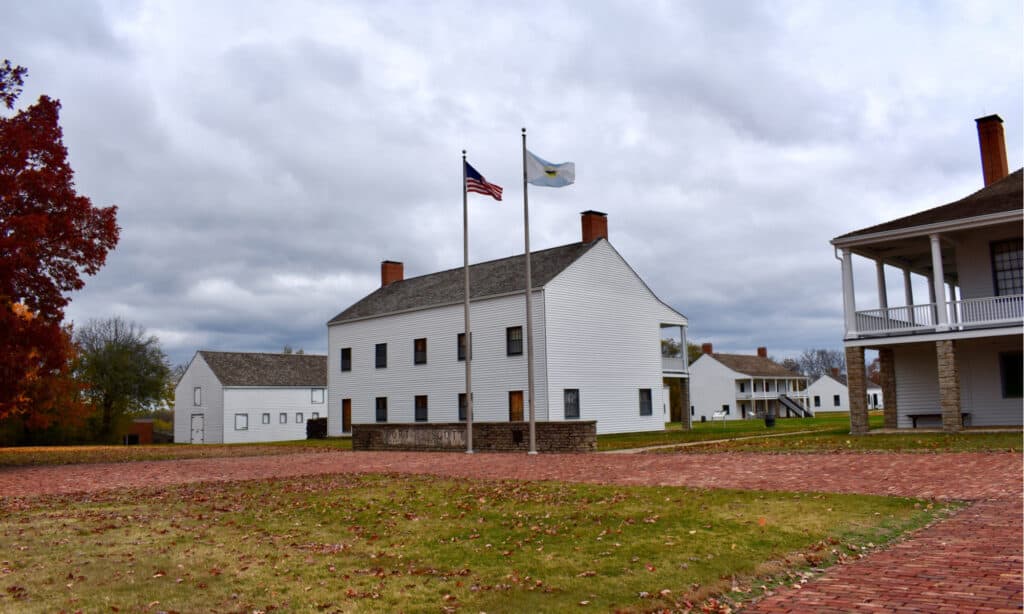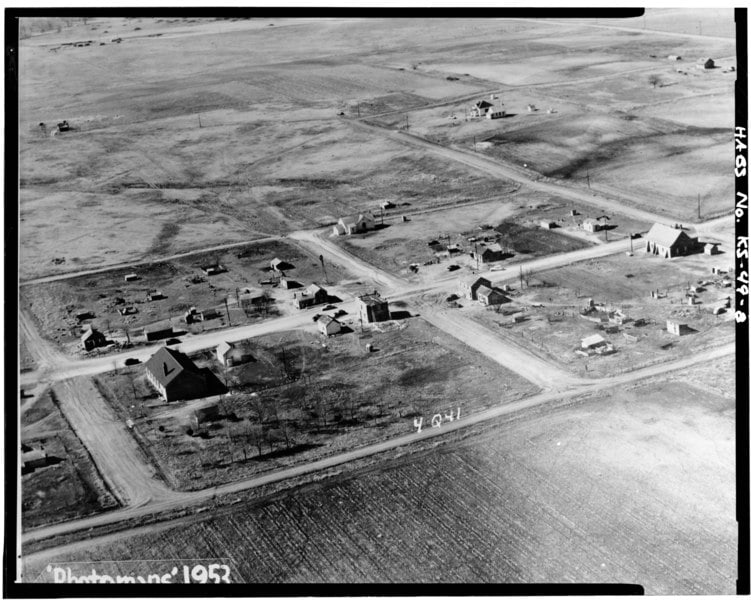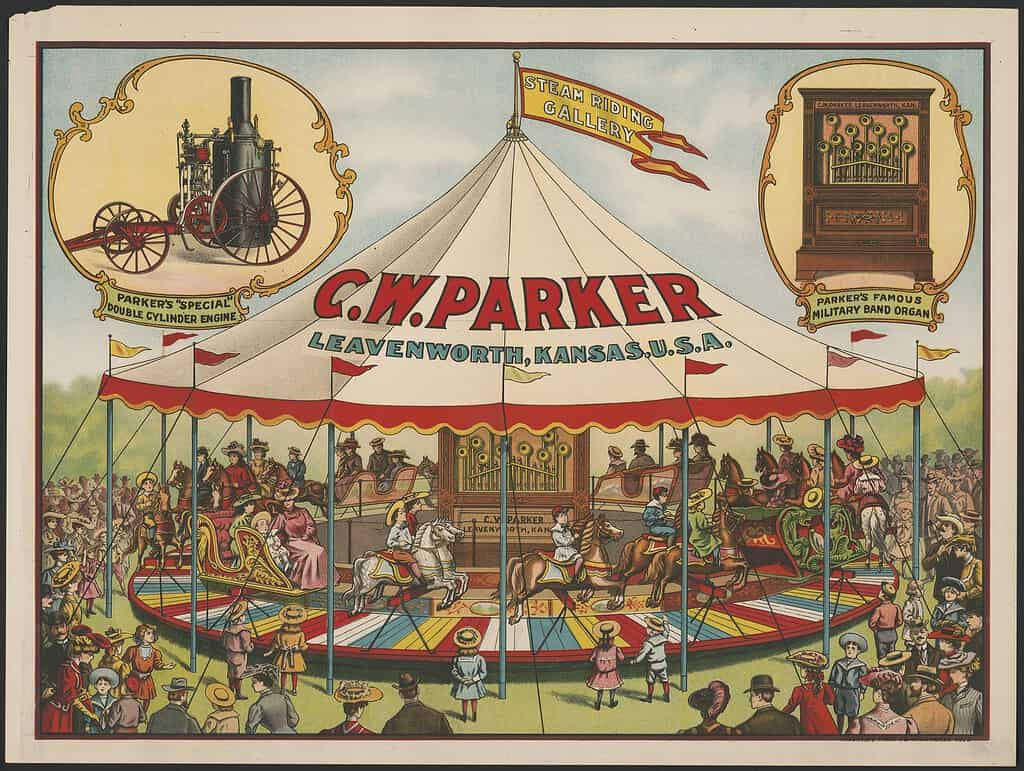When you think of Kansas, you may think of corn fields, plains, or the Wizard of Oz. But this state is actually home to so much more. In fact, there are 26 national historic landmarks inside of Kansas, and we’re going to highlight some of the best.
While it’s hard to pick between all the awesome landmarks, we’ve selected six of the most interesting historic spots to visit in Kansas. The state has a long history, with sites representing all sides of various American conflicts. Read through to gain an understanding of Kansas’s role in some of American’s wars and landmark decisions. There’s also a carousel on the list, for folks looking for some lighter history!
1. Fort Scott

Bleeding Kansas is one of the state’s most well-known historical conflicts, and Fort Scott played an important role. There were two hotels on the fort, each occupied by people on different sides of the slavery conflict.
©Lindsey Martin Webb/Shutterstock.com
Located near Fort Scott, Kansas is the Fort Scott National Historic Site. If you’re a history buff seeking to get familiar with Kansas’s war history, Fort Scott is a stellar place to visit. The fort was named after Winfield Scott, who fought during the Mexican-American War. The fort was used primarily during 1842-1853, during a dark time when the United States was focused on keeping the Plains Indians out of the settlers’ area. It was also utilized during the Civil War.
2. Hollenberg Pony Express Station

This site was only used as a station for 18 months. After that, it spent many years as a homestead before receiving its status as a National Historic Site.
©Joseph Sohm/Shutterstock.com
Another historic site for those looking to learn about Kansas’s long history is the Hollenberg Pony Express Station. This is the most intact station of the Pony Express remaining anywhere in the country. It’s near Hanover, Kansas, and consists of a small building with a loft. People traveling along the California and Oregon Trails could stop at the Pony Express to sleep and rest their animals.
3. Nicodemus Historic District

This historical site’s name traces back to abolitionist Henry Clay Work, who wrote a powerful piece called “Wake, Nicodemus” in the mid-1800s.
©See page for author, Public domain, via Wikimedia Commons – Original / License
While much of Kansas’s National Historic Sites tell a story of the state’s harsh involvement in colonialism and war, there are also important sites preserving Black American history. The Nicodemus Historical District, for one, is the “oldest and only remaining Black settlement west of the Mississippi River,” according to the National Park Service’s website. Formerly enslaved people built this settlement as their first iteration of freedom.
4. Parker Carousel

Each
horse
on the carousel has its own sponsor, and each sponsor could name the horse! Some of the fun names include Guppy and Royal George.
©Miscellaneous Items in High Demand, PPOC, Library of Congress, – Original / License
If you’re exploring Kansas with young ones, or are just interested in some lighter history, check out the beautiful C.W. Parker Carousel in Leavenworth, Kansas. Built in 1912 by Charles Wallace Parker, this carousel is a historical celebration of childhood in Leavenworth. It was the 119th carousel created by this company and sometimes goes by the nickname Carousel #119. Now, the carousel sits on a piece of land called the Don Wrigley Pavillion, due to its acquisition by the Burnaby Village Museum in 1989. Wrigley was their president at the time.
5. Sumner Elementary School (Monroe Elementary)

The Brown Vs. Board of Education National Historic Park actually includes schools in South Carolina, too. This is why this historic site is known by its elementary school name. There are a few authorized sites related to the historic park, as well, in Delaware, Washington D.C., and Virginia.
©Walencienne/Shutterstock.com
One of the most important National Historic Landmarks in Kansas is Sumner Elementary School (previously known as Monroe Elementary). This school played a vital role in the Brown vs. Board of Education landmark case. This elementary school, which sits on Brown vs. Board of Education National Historic Park, is located in Topeka, Kansas. This important case decided whether or not students could be segregated in schools based on the color of their skin.
6. William Allen White House

The William Allen White House gained its designation as a National Historic Site in 1976. White lived here from 1899 until 1944 when he passed away.
Finally, the William Allen White House National Historic Site is a Kansas site celebrating Progressive journalist William Allen White. This house was designated as a state historical site in 2001, and is also called the Red Rocks State Historic Site because of the Colorado location where the stones for the exterior portions of the house were sourced. William Allen White wrote Emporia Gazette, and ultimately played an important role in the establishment of Theodore Roosevelt and the Bull Moose Party.
The photo featured at the top of this post is © derrickkeeton from Getty Images, Streakside/ via Canva.com
Thank you for reading! Have some feedback for us? Contact the AZ Animals editorial team.







